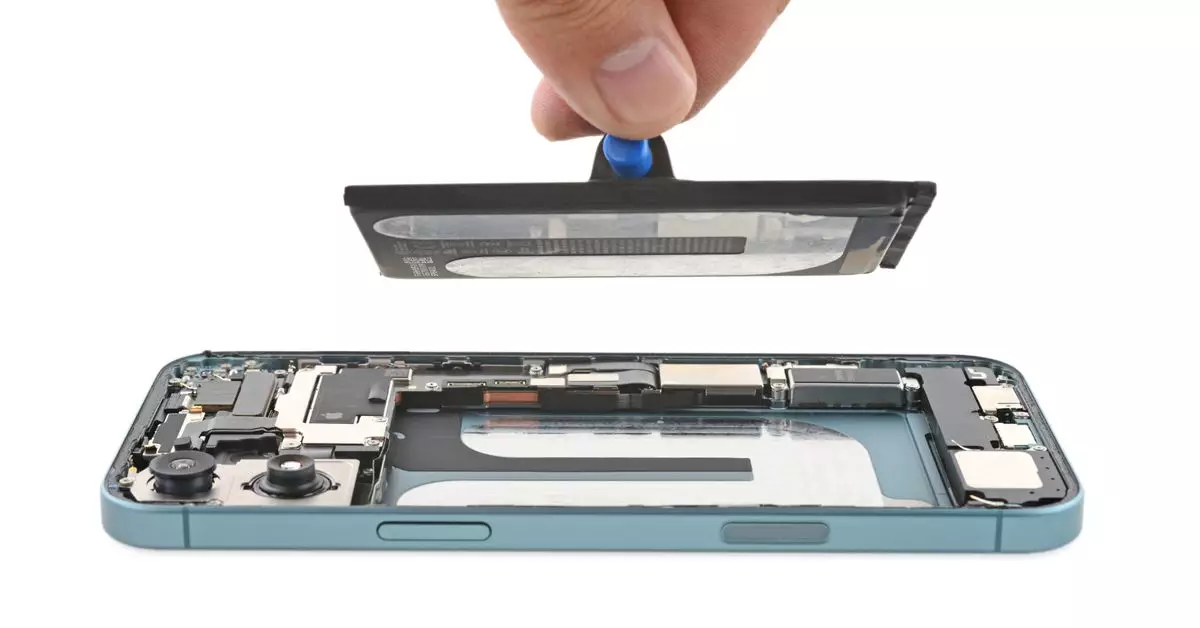With Apple continuously pushing technological boundaries, the arrival of the iPhone 16 series beckons a closer examination of its components and repairability. Recent insights from disassembly expert iFixit illuminate not just the intricacies of the design but also the innovative approaches to repair that Apple has adopted, most notably with the introduction of electrically debondable adhesive.
The iPhone 16 lineup’s teardown reveals several noteworthy features, particularly in how the internal components have been engineered for performance and longevity. The presence of a physically moving Camera control button, paired with a flex cable that appears to gauge force, suggests a significant enhancement in user interaction and functionality. This meticulous attention to tactile experience highlights Apple’s focus on refining user engagement through hardware innovations, which is commendable.
Moreover, the heat sink positioning surrounding the A18 chip’s Neural Engine is particularly intriguing. As smartphones evolve to handle increasingly complex artificial intelligence (AI) workloads, ensuring adequate heat management becomes paramount. By effectively dissipating heat from high-performance components, Apple enhances both the longevity and reliability of its devices, which is arguably a crucial factor in today’s technology landscape.
Perhaps one of the most groundbreaking revelations from the iFixit disassembly is Apple’s implementation of electrically debondable adhesive in the base iPhone 16 model. The ability to remove a battery without the traditional struggle associated with adhesive bondages represents a significant departure from conventional smartphone design. This new method is not only user-friendly but may also redefine the repair process for technicians and DIY enthusiasts alike.
The repair manuals released by Apple provide detailed instructions that allow users to understand the process of battery removal and replacement. The practical demonstration shows that after disconnecting the battery, a basic application of electric current will effectively release the adhesive bond. This simplicity in repair could lead to a broader acceptance of device repairs, as consumers can now engage in potential self-repairs without needing specialized tools.
Underneath the tech-savvy enhancements, the implications for sustainability and consumer choice in the realm of smartphone repairs are profound. By prioritizing repairability through innovations like electrically debondable adhesives, Apple not only aligns itself with broader environmental initiatives but also addresses the concerns around electronic waste. As consumers become increasingly concerned about the longevity and reparability of their devices, trends like this could very well influence future purchasing decisions.
Furthermore, while Apple is presently only implementing this feature in specific models, its potential widespread adoption could shift the entire industry toward more repair-friendly designs. This transformation is essential if the tech industry as a whole is to align with modern sustainability targets.
The disassembly of the iPhone 16 reveals an exciting glimpse into the future of smartphone technology and repairability. With innovative design features and a revolutionary approach to battery replacement, Apple seems to be paving the way for a new standard in both performance and sustainability. The iPhone 16 may not just be another incremental update; it symbolizes a significant leap towards a future where devices are designed to be more accessible and amenable to repair. As we advance, consumer expectations will undoubtedly evolve, and it is up to tech companies to meet these new standards of accountability and repair efficiency.


Leave a Reply